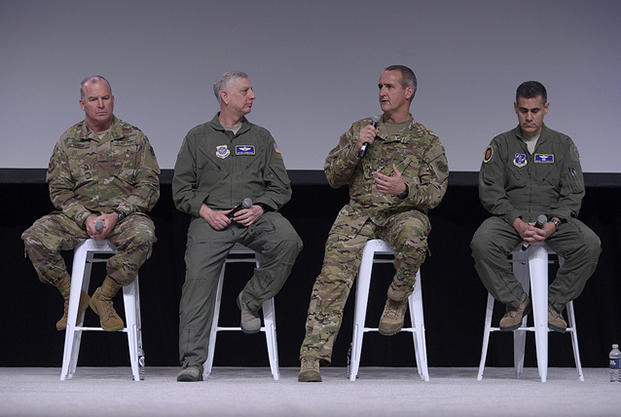
Maj. Gen. Michael A. Fantini, Maj. Gen. Mark D. Camerer, Maj. Gen. Peter E. Gersten, and Maj. Gen. Marc E. Sasseville participate in the Meeting the Needs of the New Defense Strategy panel discussion at AFA's 2019 Air Warfare Symposium at the Rosen Shingle Creek Hotel on Feb. 28, 2019, in Orlando, Fla. Staff photo by Mike Tsukamoto.
The Air Force needs to shift more training into virtual reality because even its best ranges are far too small to train in thanks to advancements in aircraft and threat systems, the commander of the Air Force Warfare Center said.
USAFWC boss Maj. Gen. Peter Gersten, speaking Thursday at AWS19, said it used to be simple to train—aircraft could take off at Nellis AFB, Nev., fly halfway across the Nevada Test and Training Range, and then engage with each other. However, with capabilities of modern aircraft and beyond-line-of-sight targeting, aircraft can be “picked off” as soon as they take off.
The Nevada range, which is largely considered the “crown jewel” of USAF training locations, is about 50 percent too small to be able to effectively train pilots on modern aircraft against advanced threats, he said.
Additionally, adversaries are getting smarter and trying to learn more about USAF systems, either by using satellites to watch what’s in the “open air” at training locations, or using cyber attacks to try to get information. The answer is to invest more into “physics-based” live, virtual, constructive training systems for better training.
“We have to start being thoughtful about how we transition a good portion of advanced training into the synthetic space,” Gersten said.
Earlier this month, the Warfare Center broke ground on its new, $38 million Virtual Test and Training Center at Nellis. This facility will be outfitted with modern simulators and will serve as the headquarters for this training.